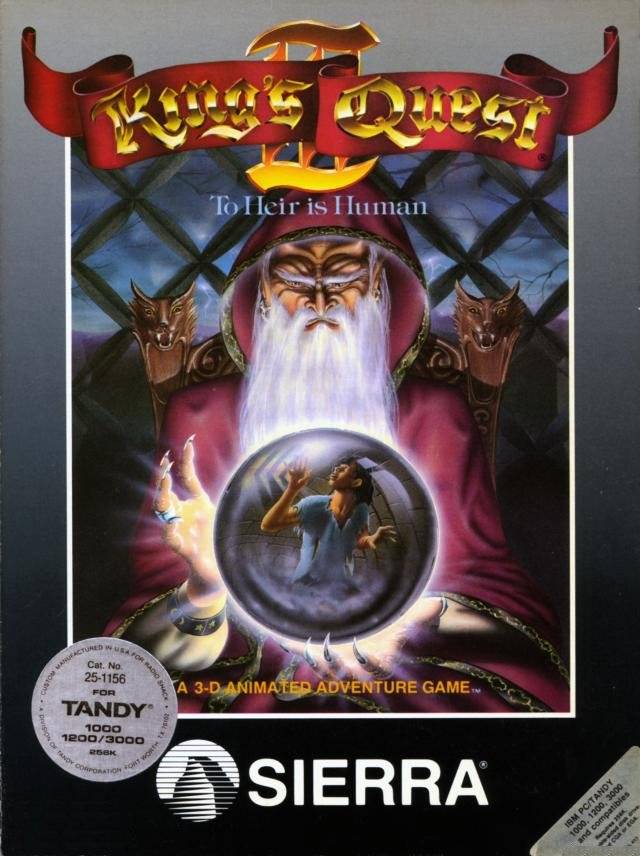It’s sometimes a little bit amazing to me that at the age of 38, I’m still finding the limits of my tolerance for things. It’s also telling that my tolerance for certain things has decreased over the years. Before we go any further in this post, though, I need to define a specific term that I learned from Magic: the Gathering (which in turn got it from poker). Specifically, I need to define what it means to tilt in a game. Wikipedia defines tilt as seen in the text box below:
Tilt is a poker term for a state of mental or emotional confusion or frustration in which a player adopts a less than optimal strategy, usually resulting in the player becoming over-aggressive. This term is closely associated with “steam” and some consider the terms equivalent, although steam typically carries more anger and intensity.
Placing an opponent on tilt or dealing with being on tilt oneself is an important aspect of poker. It is a relatively frequent occurrence due to frustration, animosity against other players, or simply bad luck. Experienced players recommend learning to recognize that one is experiencing tilt and avoid allowing it to influence one’s play.
Normally, tilt is the sort of thing you experience in competitive games – there’s a reason I know the term from Magic: the Gathering. It certainly isn’t the sort of thing that I expected to experience in Pugmire, of all places. But during slot six of Fear the Con 10, I tiled so hard I almost walked away from the table. In fact, I actually tried to walk away from the table, but the GM talked me out of it. To understand why this happened, I need to back up to the beginning of the session.
First of all, it’s worth noting that Slot 6 is the last slot of Fear the Con. It started at 7:00pm on Saturday evening, so while I’d been having a blast for the last couple of days, playing games and catching up with old friends, I was on limited sleep and my social bank was starting to get a little overdrawn (I’m an introvert, as I’ve mentioned before). I came to the slot excited to try Pugmire after listening to Grant rave about it on the podcast, and at first, all seemed well. The character I wound up with was Leo Bulldog, a character with a strong moral compass that fits well into my limited dramatic range. (We got to keep the pregen character sheets at the and of the session, so you can actually see the relevant text that touched off the rest of the story in the picture below.
 Tough and no-nonsense, but possessed of a good heart and less racist than than at least some in the setting. Definitely a “Peter” character. If I was designing from scratch, I’d have probably picked a herding breed rather than a bulldog, but whatever. I can work with this!
Tough and no-nonsense, but possessed of a good heart and less racist than than at least some in the setting. Definitely a “Peter” character. If I was designing from scratch, I’d have probably picked a herding breed rather than a bulldog, but whatever. I can work with this!
All was fine until we started out on a scouting mission, where I immediately started butting heads with the player to my right, who was playing a barbarian. We had a rather heated argument about how to deal with some porcupine folk that attacked us in the woods (I wanted to stay and face the opposing force, he wanted to run for it), but the real problems started when we found a bunch of anthropomorphic cats celebrating in a cave. There were a couple of dancers in the middle of a circle dancing in a festive way, and the circle of cats around them was laughing and clapping. Nothing sinister was going on – they were just enjoying life. And then the barbarian walked up to one of the two guards at the mouth of the cave and cut him down without so much as a word.
I lost it a little.
My immediate response was a very bleed-rich if mostly-internal “how dare you!?” I tried to stop the other PC from actually performing the attack and the dice weren’t with me. He casually struck the cat down with his weapon and that’s where things really went off the rails for me. Seeing red, I attacked the other PC (doing a significant amount of damage with the first attack), the PC group dog piled (ha! dog pile – Pugmire… …yeah, that’s not all that funny) my PC to keep Leo from killing the other PC, and things devolved from there. I tried to negotiate with the other player, asking if there was a “racism against cats” trait on his character sheet. He said there wasn’t and he was sticking to his plan. At that point, I stood up to walk away from the table. I really didn’t want to kill another PC, but I also didn’t want to stick around for the wholesale slaughter of people who just happened to be in the wrong place at the wrong time – in addition to that being as bad as it sounds just on face value, some of you probably know that my wife and I lost our cat earlier this year, and that probably played an additional subconscious role. I was also a bit embarrassed about making a scene (and to some extent, still am) and wanted to get out of there for that reason, too.
Ultimately, the GM asked me to sit back down, managed some fantastic story wizardry, introduced us to an awesome Scottish badger, and the rest of the slot was fun. The other PC and the cat he cut down both survived, due to the negotiating skills of our pug princess and the healing talents of our collie cleric. I’m pretty sure the cat was a retcon on the GM’s part, but I was well beyond caring at that point and just appreciated the concession.
As recently as the day before we recorded our episode with Dr. Sarah Lynne Bowman, I think I’d have felt even worse, and I’d also have had a hard time articulating why. Talking with Sarah helped to both crystalize and validate some things that have been swimming around in my head for a while. With the benefit of both those insights and the amazing powers of 20/20 hindsight, here are what I think would be some good takeways from that incident. (In addition, I reached out to Sarah as part of writing this and have some great links about related topics for you to take a look at as a result of that conversation. Be sure to check out the hyperlinks in this post and the couple of extra ones at the end!)
My first and worst mistake, I think, was trying to resolve things in-game at all. I probably should have just asked for a time out and explained my reservations. That did not occur to me in game at all. I really should have hit the proverbial brakes and said “this is tilting me. Can we please go another direction with this?” I think at least part of the reason I didn’t is covered under the discussion of the “cult of the hardcore” in this article on consent-based play.
The second problem, which is less of something that was the fault of any one person and is more down to general media and gaming culture is that tables will tend to follow someone who does a “Leeroy Jenkins” and picks a fight, no matter how immoral or ill-advised, in part, I think, because they fear that the GM will kill the party off unless they commit to it. This was one of the things the GM did right in this scenario, by the way. After I explained that things had gotten to the point where I felt like I needed to leave, he had the NPCs stop the fight by restraining the other PC and (very angrily) asking us what was going on. I think the other player was operating under the same assumption that he could start a fight and nothing would stop it. This type of table dynamic is the reason things like Lines and Veils and consent-based play exist. It’s hard to level-set the comfort of the players in a con game without chewing up a lot of valuable game time, though, so sometimes things like the incident in this post happen.
And in the other player’s defense, I also got the impression he wasn’t viewing the game through the same set of lenses I tend to – he probably wanted some 5e tactical hack & slash (Pugmire is based on D&D 5e) which, devoid of the moral context I was supplying would have probably been fun. Fifth Edition D&D has a very nice set of combat rules and the battles play out pretty quickly and excitingly. Further, the other player may have been taken aback a bit by my bleed and the moral lenses I’ve started to use almost unconsciously.
Another take-away, not exactly a problem, is that instead of becoming de-sensitized to violence over time like I was warned about in my childhood, I have instead become more sensitized to it. I ran into that same phenomenon last weekend after the con when I watched John Wick: Chapter 2 on Monday and then went to see Wonder Woman on Tuesday. No spoilers for the plot of either movie, but John Wick is bloodthirsty and Wonder Woman is merciful in their respective fighting styles and I was keenly aware of that difference as I walked out of Wonder Woman and appreciated the latter movie for it. (Both are pretty solid films, for what it’s worth, and it’s worth the quick mention that both are also very gameable. WWI is a criminally under-utilized setting in genre fiction and the whole universe of the John Wick films with The Continental, The High Table, and other various stylish international crime-based stuff is all very cool and just begging to be lifted.)
The final take-away is that, especially in convention game scenarios where you may not know the other players’ sore spots, one should be gracious at the table. You never know what’s going to be just a little too much for someone else and sometimes what’s a little too much for you will come as a surprise. Be willing to dial it back, back up, and compromise if someone is getting worked up out of the game.
Two additional pieces of content Dr. Bowman was kind enough to share that deal with related topics:
1. Social Conflict in Role-Playing Communities: An Exploratory Qualitative Study (by Sarah Lynne Bowman)
2. Bodies and Time in Tabletop Role-Playing Game Combat Systems by Evan Torner (This link is the entire companion book for Wyrd Con 2015; the article the link refers to is the last one in the book)
This post’s featured image is from Tom Conger, used under Creative Commons.




